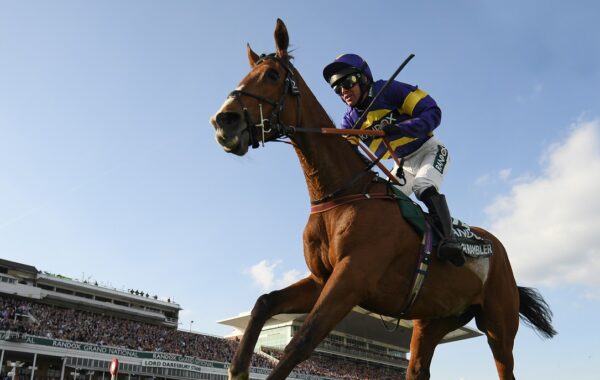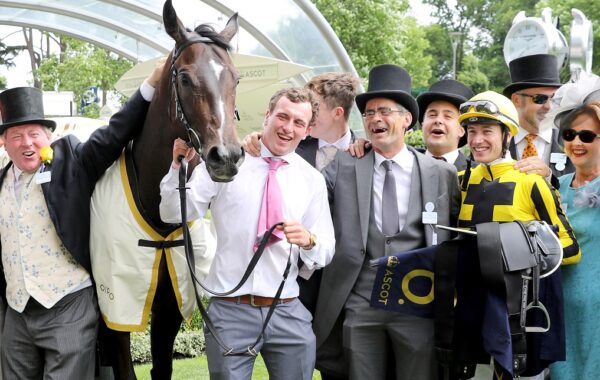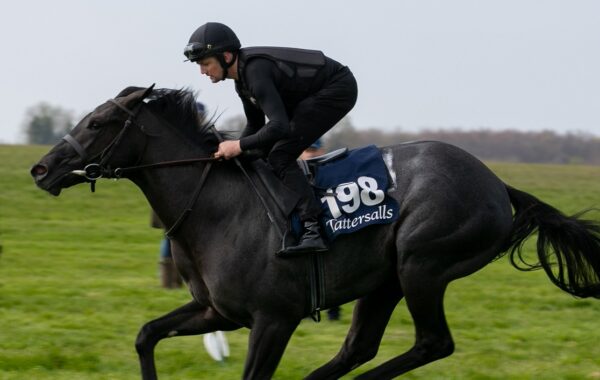Flat racing aficionados should have been gearing up for the first British Classic of the season, the QIPCO 2,000 Guineas, which was due to be run at Newmarket on Saturday.
Sadly the ongoing situation with the coronavirus pandemic led to a decision in April that both the 2,000 and 1,000 Guineas, along with the Derby, would need to be rescheduled to a later date in 2020.
Owner Breeder photographer George Selwyn has been attending the famous race since 1976 and has selected some of the favourite winners over five decades.
Working on the Rowley Mile can pose a number of problems for photographers, and Selwyn says: “The course presents unique challenges for snappers as horses can finish anywhere on the wide-open spaces of the track.
“If horses are drawn on the far rail, some can drift over to the middle, while others stay on the rail. In addition, if you are positioned on the far rail, you end up shooting into the light with the barren landscape of the Heath in the background.”
Tap On Wood, 1979
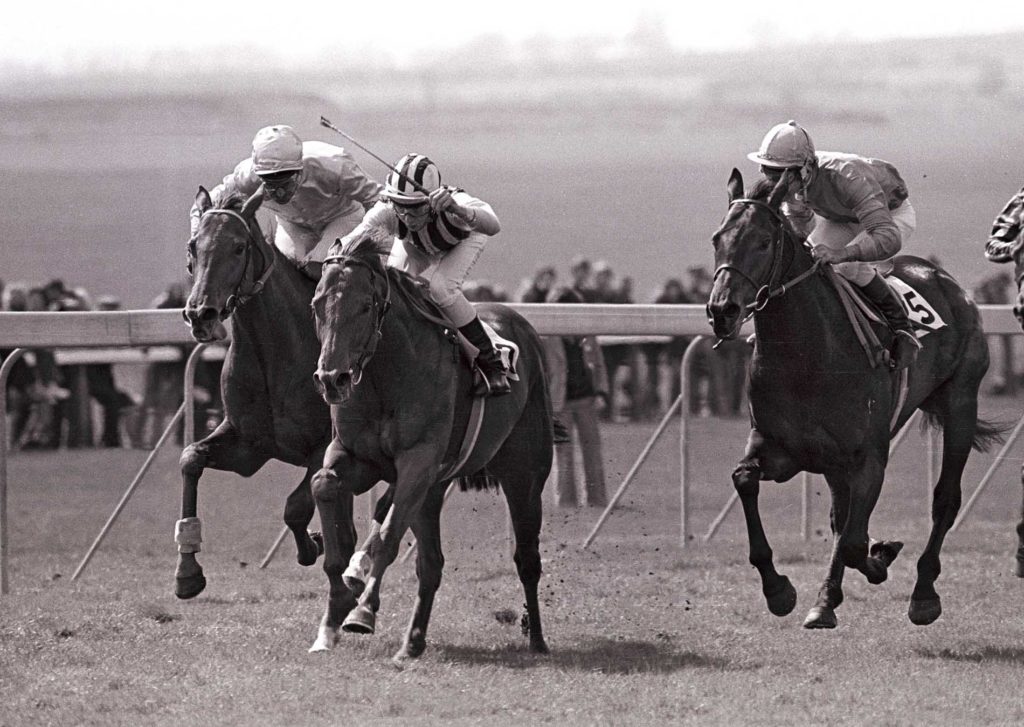
Tap On Wood and Steve Cauthen (centre) beat Kris (left) to win the 2,000 Guineas – Photo: George Selwyn
Four days after his 19th birthday, American riding sensation Steve Cauthen, aka ‘The Kentucky Kid’, hit the headlines with his winning ride on Tap On Wood in the 1979 2,000 Guineas. The teenager already had a US Triple Crown in the bag thanks to the mighty Affirmed in 1978.
Cauthen, who had arrived in Britain that April, had come over to ride for owner Robert Sangster and trainer Barry Hills. His mount in the colt’s Classic, Tony Shead’s Tap On Wood, was a 20-1 outsider and up against Henry Cecil’s unbeaten Kris, racing for owner-breeder Lord Howard de Walden.
Tap On Wood and Kris were both settled off the pace but made headway to challenge for the lead passing the three-furlong marker. Heading in to the dip, Tap On Wood and Cauthen held a narrow advantage over Kris and Joe Mercer. Young Generation threw down a late challenge but Tap On Wood had enough in reserve to score by half a length, with Kris edging out Young Generation for the runner-up spot.
Known Fact, 1980
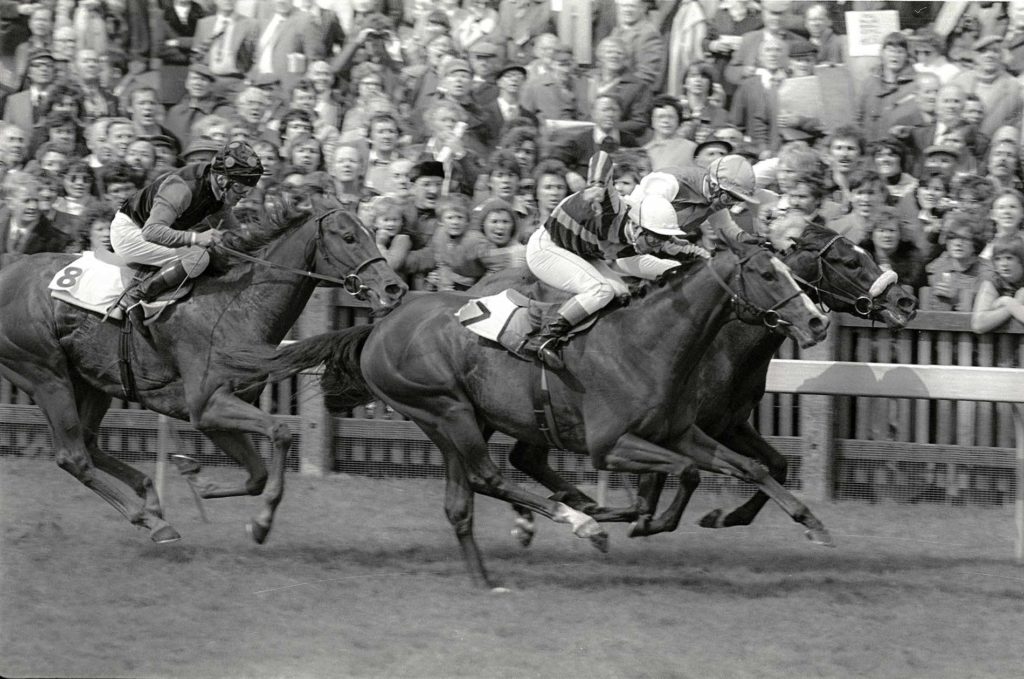
Nureyev and Philippe Paquet (7) just beat Known Fact in the 2,000 Guineas but was later disqualified and placed last – Photo: George Selwyn
One of the most controversial editions of the 2,000 Guineas came in 1980 when the favourite Nureyev, trained by Francois Boutin for Greek shipping tycoon Stavros Niarchos, crossed the line in front but was later disqualified for causing interference.
While Nureyev sealed a clear-cut victory over Known Fact, his jockey, Philippe Paquet, was adjudged to have pushed his way through a number of horses, including Posse, when making his challenge from the rear of the field.
The stewards decided to demote Nureyev to last, which left the Jeremy Tree-trained Known Fact and Willie Carson as the winners, with Posse promoted to second from third. The victory for Known Fact meant the colt became the first winner of the Classic for Khalid Abdullah.
Dancing Brave, 1986
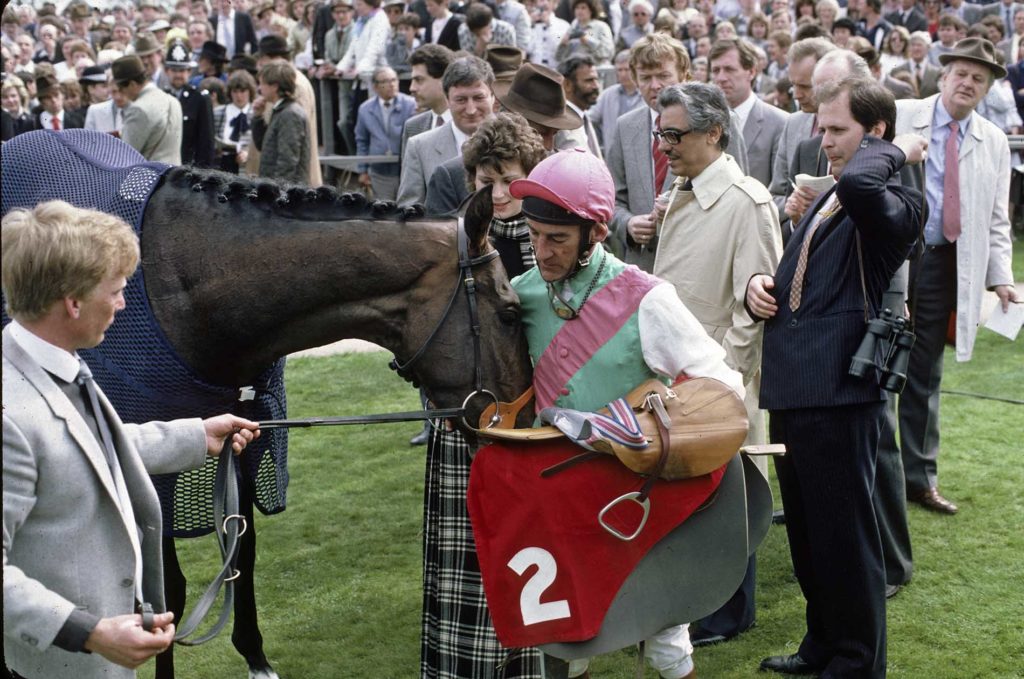
Dancing Brave and jockey Greville Starkey after they had captured the 2,000 Guineas – Photo: George Selwyn
Bought on behalf of Khalid Abdullah by James Delahooke as a yearling at Keeneland for $200,000, Dancing Brave was an outstanding racehorse with a sensational turn of foot.
The son of Lyphard, trained by Guy Harwood, ran twice as a two-year-old and reappeared at three by taking the Craven Stakes a few weeks before lining up in the 2,000 Guineas, when he took on the highly regarded Green Desert.
The slow gallop looked like it might not play into the hands of Dancing Brave, but he displayed what became his trademark acceleration and quickened up impressively under Greville Starkey to beat Green Desert by a handsome three lengths.
Sea The Stars, 2009
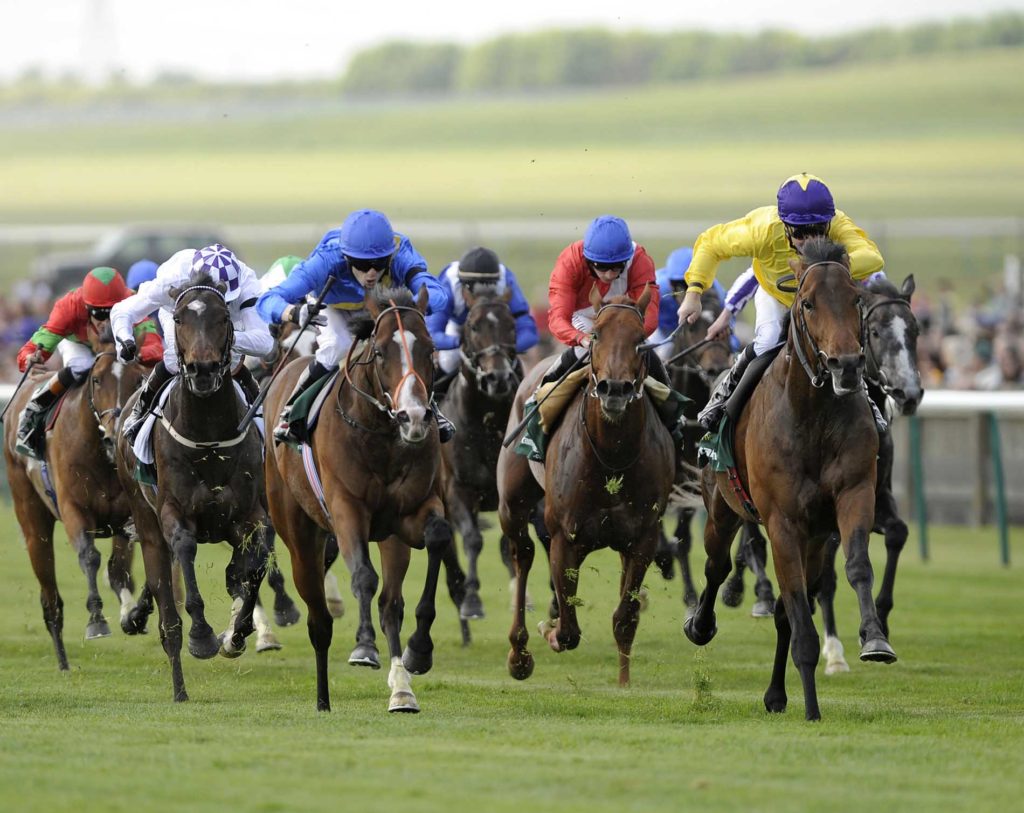
Sea The Stars (purple cap) wins the 2,000 Guineas – Photo: George Selwyn
Before Frankel came Sea The Stars, the son of Cape Cross who boasted an illustrious pedigree being a half-brother to Coolmore’s champion Galileo and out of influential mare Urban Sea.
After a smooth two-year-old season in 2008 that culminated with a win in the Beresford Stakes, Sea The Stars’ participation in the Guineas looked in doubt when he suffered a setback six weeks before the race.
However, the John Oxx-trained colt made it to Newmarket and while the market sent Delegator off as the 3-1 favourite, Sea The Stars showed an impressive turn of foot to capture the contest by a length and a half.
Sea The Stars proved unbeatable that season, taking the Derby, Coral-Eclipse, Juddmonte International, Irish Champion Stakes and Prix de l’Arc de Triomphe, after which he was retired to stud.
Frankel, 2011
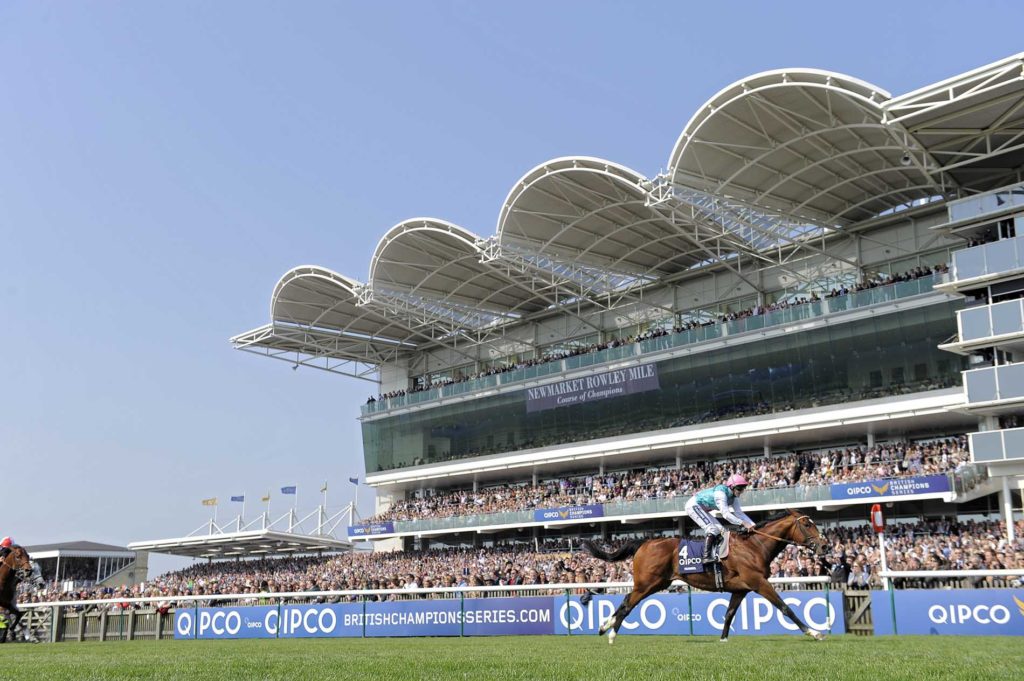
There was no catching 2011’s impressive 2,000 Guineas winner Frankel – Photo: George Selwyn
Those who converged on the Rowley Mile to see if Khalid Abdullah’s unbeaten colt Frankel could follow up his dominant Greenham Stakes victory were treated to a performance they will never forget.
Under jockey Tom Queally, Frankel was quickly into stride and soon well clear of his rivals. At the halfway point the race looked to be over as a contest, and as it became clear that the duo weren’t for catching, the crowd burst into spontaneous applause before the son of Galileo had reached the furlong pole.
Frankel’s rivals were never able to land a blow and he won by six lengths from Dubawi Gold and Native Khan. It was a victory that propelled trainer Henry Cecil back into the limelight while Frankel went on to capture his next eight races, all at the highest level, retiring with a career record of 14 wins from 14 runs.



